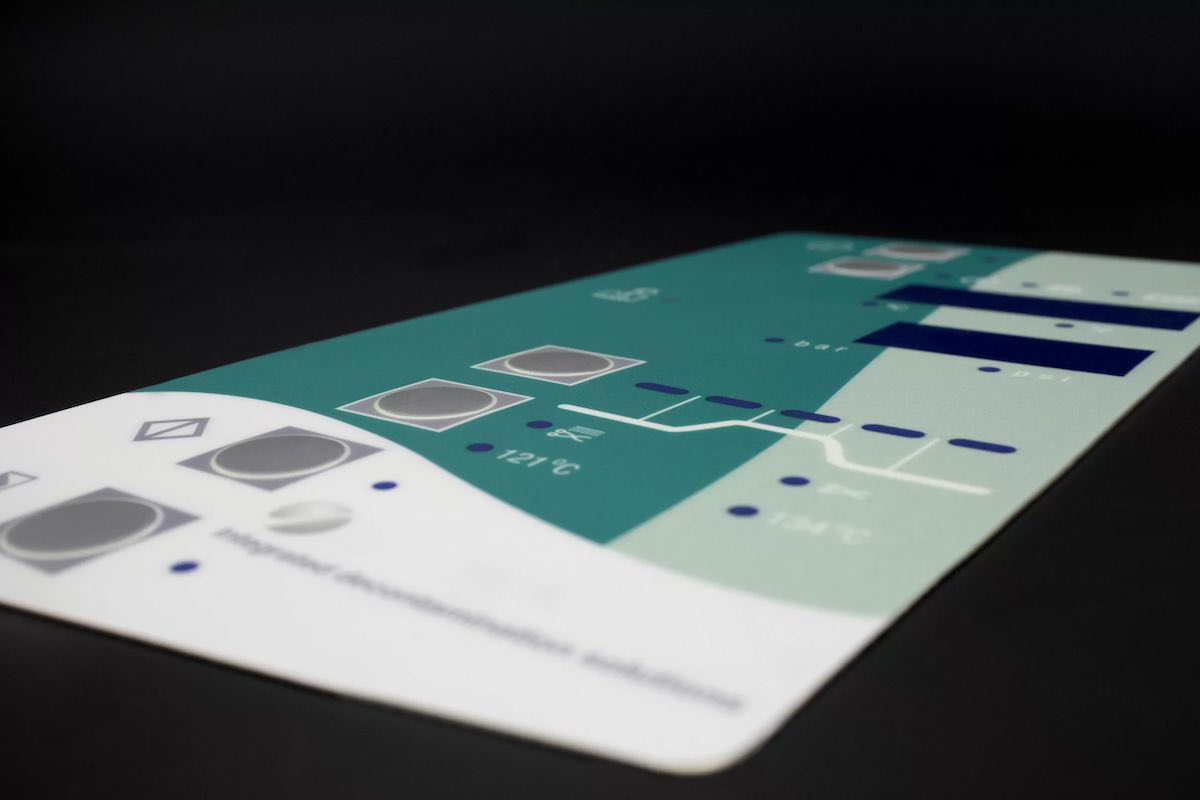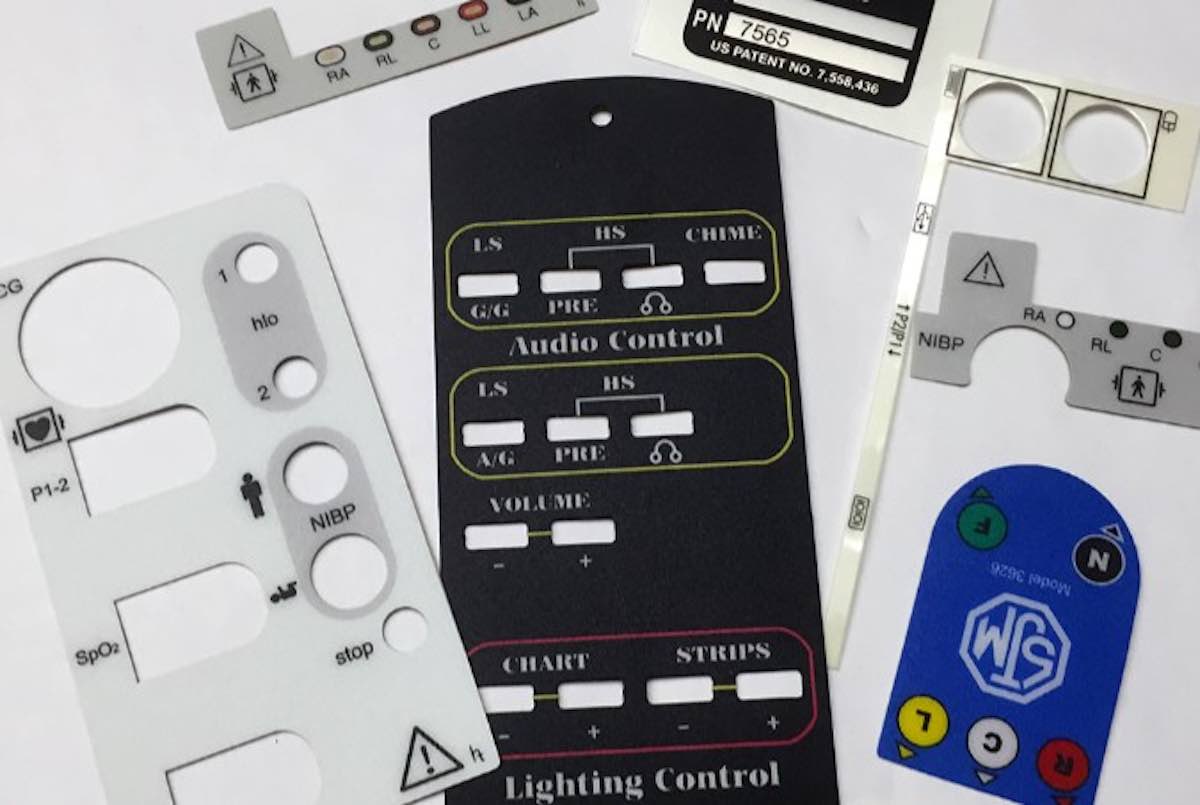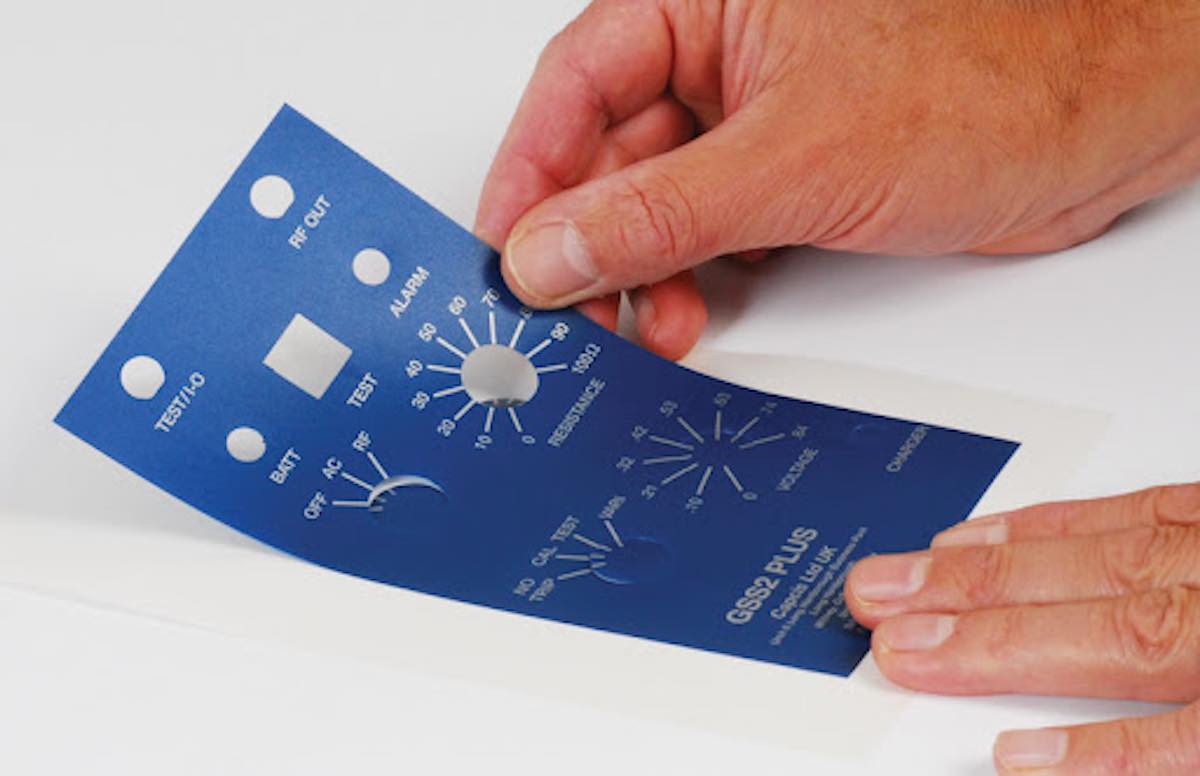Graphic overlays have long been an integral component of many industries, such as industrial, medical, military, and automotive sectors, acting as protection or interfaces for electronic devices or systems. Graphic overlays often serve as the first thing users notice about products, playing an instrumental role in shaping user experiences while leaving an indelible mark of product identity and branding with customers.
Graphic overlay design can be crucial to the creation of new electronic systems or devices as the HMI (Human Machine Interface) of products must reflect user needs to maintain operational status and manage production processes. As a product designer, you must take many factors into consideration regarding application and usage; no two projects will ever be alike!
This article will explore the factors to be taken into account when designing graphic overlays, including details such as their purpose of use, application environment, color matching, layout adjustment etc. Establishing a strong base from the start can bring great advantages for the final graphic overlay while saving costs associated with later maintenance and modification.
1. Gain an overview of the project
Before purchasing a graphic overlay for your project, take some time to pause and ask yourself some simple questions about the product. By answering all of your queries about it, you will solidify your choice and ensure it will meet all the specifications that were established by your design specifications.
- Whether you are a graphic overlay designer or a graphic overlay manufacturer, consider all details about the product’s operation and user expectations before work begins.
- Understand any environmental influences that could alter how well the equipment performs such as humidity, high temperature or sterility environments that could hinder its operation.
- Attention to minute details such as font size and weight will enable engineers to create designs with manufacturability in mind.
- Substrate consideration is critical in creating an overlay design that meets expected frequency and intensity of use, and can ensure proper functioning in final assembly.
2. Choose appropriate material
Once a project has been fully understood, material selection becomes the next critical step.
First, the substrate material can be selected based on your device. Common choices for graphic overlay substrates include polycarbonate and polyester film; polycarbonate provides superior impact resistance, clarity, and overall durability while polyester excels when high-pressure button life is necessary.
UV resistance should also be taken into account when using an overlay in direct sunlight, along with surface finish when considering glare, user interaction and any backlighting features.
3. Aesthetics and ergonomics
Graphic overlays should blend in seamlessly with the aesthetic concept of any device. Aesthetics refers to aesthetic appeal while ergonomics emphasizes user comfort for an ideal user experience – for instance, controlling, buttons, or any physical aspects should promote natural hand movements.
Low-light devices can benefit from adding backlighting for better visibility and ease of use, creating a seamless user experience. When designing such an overlay, care must be taken in matching it seamlessly to the device to provide the best user experience.
Custom graphic overlays require being made with care and thought to ensure they meet their objectives, such as reflecting brand colors, logos and fonts while remaining visually appealing. By combining brand colors, logos and fonts together designers can craft an overlay which complements both user experience and brand perception. A striking graphic can not only improve user experiences, but can also promote overall brand perception.
4. Compliance and supervision
As with the device itself, graphic overlay must also conform with relevant industry standards and compliance requirements for aerospace, medical and automotive industries.
At the outset of any project, it is critical to gain an understanding of both its industry and any applicable regulations. For example, the U.S. Food and Drug Administration (FDA) enforces stringent requirements for medical device labels to meet strict accuracy, readability, risk disclosure standards. In order to enhance pilot safety and reduce errors, the FAA has issued guidelines pertaining to labeling design in aircraft cockpits as well as guidelines on labeling/user interface design standards for labeling/label placement in cockpits.
Certain regulations require the use of flameproof or chemical resistant materials and warning symbols or warnings may also be mandatory. Adherence to standards like UL or ISO is essential for product compliance, safety, reliability and product compliance.
5. Printing technology in the manufacturing process
Designing an appealing overlay is only the first step; turning that design into a functional product involves several intricate manufacturing processes that need to be undertaken in order to bring it to fruition. Below is an outline of these steps in their entirety:
- Select an effective printing technique such as screen or digital printing.
- Digital printing applies ink directly from digital files; for screen printing, each color requires its own stencil.
- Printing typically involves UV exposure or heat treatment to ensure proper adhesion and durability of ink.
- Additional finishes such as laminates or hard coatings may be added for enhanced chemical or scratch resistance.
- Die-cutting technology enables us to cut printed paper into individual covering layers according to the shape of our design.
Graphic quality directly impacts aesthetics and readability of printed media. Prioritizing high-resolution printing will ensure crisp images, accurate colors and clear text. Evaluate print quality regularly during production to maintain consistency and ensure its effective presentation.
6. Quality assurance test
Quality assurance measures help ensure graphic overlay products have high reliability and long-term durability when in real life usage, with common tests including:
- Size and precision inspection: Once graphic overlays have been manufactured, they should be thoroughly examined to ensure their edges, holes, and other characteristics meet quality control standards in order to avoid poor assembly or functional problems.
- Functional testing: If the graphic overlay includes special functions (e.g. touch screen, water resistance or high temperature resistance), functional testing must take place to validate them. For instance, response sensitivity and UV resistance of touch screens need to be confirmed for example.
- Environmental testing: By performing environmental tests such as temperature, humidity and salt spray corrosion corrosion tests on products in different environments, their stability and durability can be verified.
- Final inspection and packaging: Once production is completed, products should undergo a comprehensive quality inspection, including appearance inspection, functional testing, size calibration, etc. Only qualified products will be packaged and shipped reducing risk that unqualified ones enter the market.
Tests should also adapt to the actual environment and mode of product usage; tests cannot remain static. Quality assurance measures, however, cannot be ignored as they play a decisive role in ensuring final quality product.
7. Layout techniques
Arranging information on an overlay doesn’t need to be complicated – use these design tips and keep things straightforward with regards to layout and messaging.
- Arrange information in an orderly, logical fashion, listing only essential data. Display it clearly, making sure it’s large enough to read easily, and arrange it according to importance for users – one general guideline would be moving from general to specific information.
- Visual hierarchy in graphic overlays must be carefully considered in order to ensure the most critical information is easily discernible from secondary or tertiary details. By employing colors, font sizes, and styles that contrast from each other, designers can draw user’s attention towards critical components of the overlay; creating an uninterrupted user experience and preventing confusion or information overload.
- User interface (UI) design should provide an intuitive, user-friendly experience for visitors to your product or service. When placing and designing a user interface (UI), consider how buttons, labels and indicators affect usability of the overall product or service.
- Consistency in design is key when creating graphic overlays. By keeping elements such as fonts, colors and icons uniform across designs elements such as fonts, colors and icons, designers create a sense of familiarity and reliability for users that helps the overlay blend in smoothly with its broader interface, guaranteeing an enjoyable visual experience.
- Accessibility and usability are key components of graphic overlay design. Designers must ensure that overlays are accessible to a range of users, including those with disabilities. This can be accomplished by adhering to accessibility guidelines such as providing alternate text for images or using color schemes that accommodate people with color blindness. Furthermore, overlays should work across devices and screen sizes seamlessly, creating an enjoyable user experience for all.
8. Conclusion
Graphic overlay design goes beyond aesthetics. Engineers with an understanding of material properties, user experience, manufacturing processes and aesthetics can produce graphic overlays with both form and function that meet both criteria. By adhering to user-centric design principles, meeting compliance regulations, selecting materials with optimal performance characteristics and selecting user-centric materials that deliver consistent and positive user experiences engineers ensure their graphic overlays provide consistent and positive experiences for all their users.







